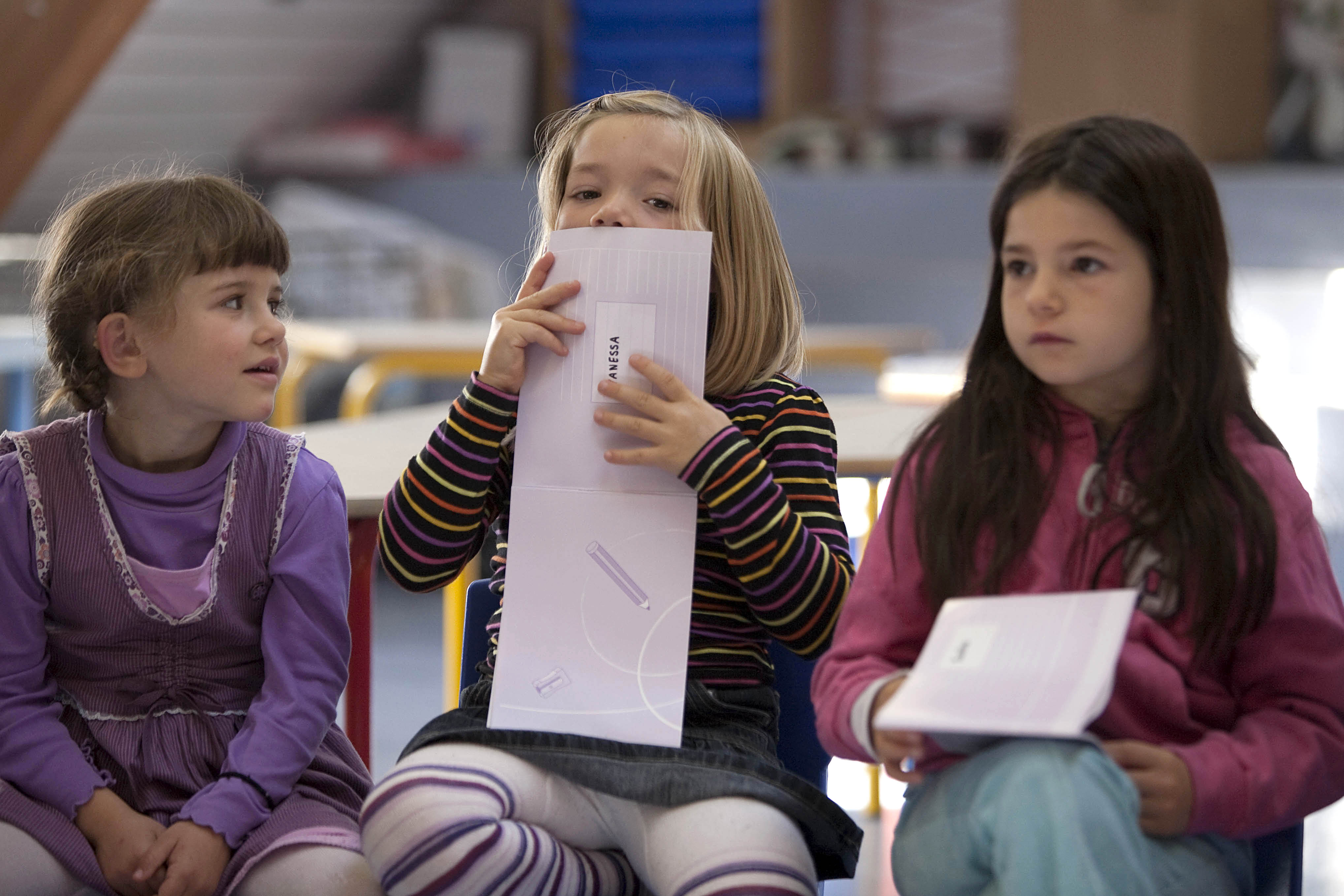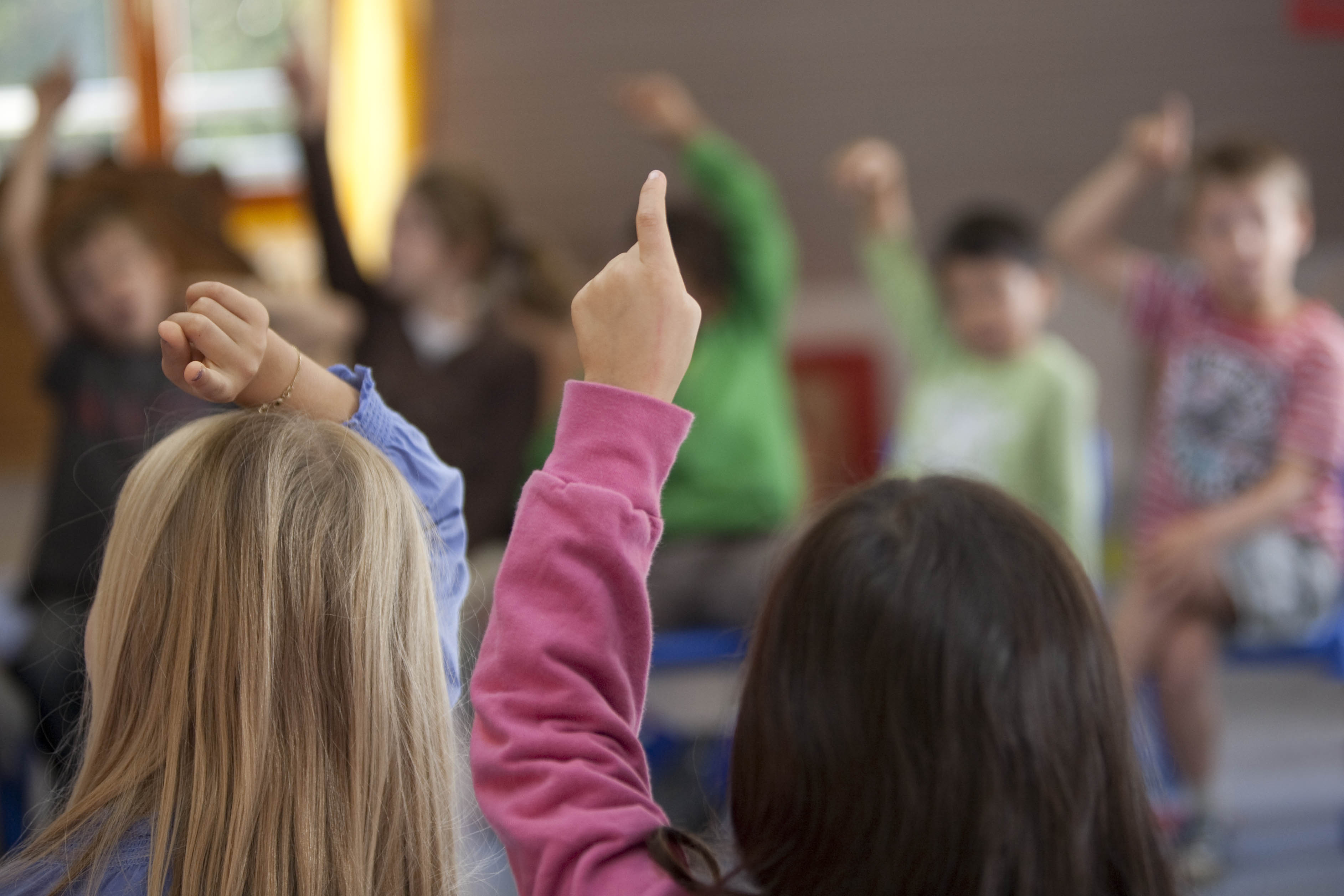Reaping the benefits of multi-age classes

In Switzerland, where many schools are located in small communities, multi-age classes have often been a matter of necessity. Now some primary schools are adopting them as an educational model.
Grouping children of different ages in the same class is practically the norm in alpine villages and other small remote communities. Sometimes, when there are not even 20 pupils and resources are limited, one teacher ends up teaching them all, from first grade to the last year of primary school.
In some cantons of Switzerland, it is estimated that over 20 per cent of classes are multi-age. In most cases the teachers are dealing with a fait accompli: the decision is made at a higher level and they just have to make the best of it.
“The choice is rarely based on a clear educational policy,” notes Olivier Maulini, an education specialist at Geneva University.
Over the past 20 years however, the debate on the advantages of multi-age classes has taken a new direction. The United Nations Educational, Scientific and Cultural Organization (Unesco) has promoted the adoption of the approach in the developing world, and several Western countries – including France and the United States – have attempted to integrate it into their educational systems.
Children in these settings develop autonomy, a spirit of collaboration and a thirst for knowledge, say advocates of the approach. In Switzerland, some schools have now adopted multi-age classes as their policy, believing that age diversity is a resource that should be tapped.
Challenging
In the small village of Barberêche, in canton Fribourg, children aged four to eight are together in the same class. Some can already read and write, others are only learning to recognise the letters of the alphabet.
Sometimes they work together, other times they are split up into groups, “more in terms of their knowledge than their age”, as their teacher Anne-Marie Geinoz points out.
For the teacher working in this setting, preparation needs to be thorough and managing time and space is essential.
“Running a multi-age class needs a lot more work, especially for someone who is just starting out,” explains Julien Clenin, lecturer at the teacher college for the cantons of Bern, Jura and Neuchâtel.
“You have to follow the progress and problems of every child and adapt the tools you use to their needs.”
Some cantons, including Fribourg, have started special workshops to train young teachers in how to manage a class at several levels. “Underlying this approach is a clear educational philosophy: all children have their own pace of learning, which is often independent of biological age,” explains Maulini.
“To have pupils of different ages working together reproduces the family model and fosters the development of social skills which are of particular use in some settings, like rural life.”
Trust
Until now there have been few empirical studies on the advantages and disadvantages of a multi-age class in terms of purely academic achievement. Do these pupils do well or are they being held back?
It is hard to determine, admits Maulini. “A lot depends on the attitude and ability of the teachers, the institutional support, and the socio-cultural environment the children live in.”
The power of imitation among children is evident to Geinoz, who besides teaching in Barberêche is responsible for training workshops on multi-age classes at the Fribourg teacher training college.
“The stimulus doesn’t come just from the teacher, but from classmates too,” she told swissinfo.ch. “The younger ones try to copy the older ones, while the older ones process their knowledge better or at least are more aware of what they have already learned.”
According to a study by St Gallen educational researchers (see sidebar), pupils in a multi-age class are more autonomous.
“They learn to work on their own and help each other when the teacher is busy explaining maths or grammar to another group,” explains Clenin.
Age ceases to be a discriminating factor, and competition gives way to collaboration. “The pupils tend to make fewer comparisons and can take in their stride the sort of temporary difficulty which elsewhere might be seen as ‘failing at school’,” he adds.
A reality
Initiatives like the one in Barberêche are still the exception in Switzerland, where age diversity in a class is often considered a problem.
For supporters of a traditional educational model, more oriented towards authority and merit, teachers are not expected to follow the individual pace of every child, but to select the best. The others will have time to catch up later – if at all.
In most cases, multi-age classes are a stop-gap solution. This is indicated by the lack of specialised teaching manuals. But there is more than that involved.
“Rising pupil numbers, parents’ reluctance, the pressure of the syllabus and tests – all these things are weighing on the teachers,” explains Geinoz. In addition, pupils from immigrant families without the required language skills can add to the existing diversity and make a teacher’s task even more demanding.
Through choice or necessity multi-age classes in Switzerland are a reality. The advantages the model may depend not only on the teachers, but even more so on the school system, according to Clenin.
“It is hard to promote an approach that requires more energy and time if it is not based on a clear educational philosophy – on the desire to make the child the centre of teaching and to provide teachers with the tools they need to do that,” he points out.
Barberêche school is part of a larger national project, called “Basisstufe” or basic level, which involves grouping pupils from kindergarten and primary school.
The pilot phase was launched in 2003 and ended in 2010. Some ten cantons and the principality of Liechtenstein participated, with a total of 3,000 pupils and 151 classes.
Two models were used:
Basisstufe-3: the last year of kindergarten plus the first year of primary school
Basisstufe-4: the last two years of kindergarten and the first two years of primary school (ages 4-8)
St Gallen teacher training college prepared an evaluation report in 2010. The report deemed the pedagogical model a success. It concluded that multi-age classes ease the transition between early childhood education and primary school, as well as allowing children to advance at their own pace and to achieve results similar to those of single-level classes.
The report acknowledges the heavier load for teachers, in terms of preparation and class management.
Besides the “Basisstufe” project, other Swiss communities have decided independently to promote multi-age classes in primary school, and intentionally group two or three age-levels.
Schooling in Switzerland is a responsibility devolved to the cantons, meaning there are 26 different education systems in the country although they have some basic principles in common.
A programme to harmonise the education system at a national level, known as Harmos, is under way.
Children are legally required to attend school for nine years, and state schooling – attended by 95 per cent of pupils – is free.
Most children start school at the age of six, after one to three years of kindergarten. In most cantons primary school lasts six years, secondary school three years.
(Translated from Italian by Terence MacNamee)

In compliance with the JTI standards
More: SWI swissinfo.ch certified by the Journalism Trust Initiative



You can find an overview of ongoing debates with our journalists here. Please join us!
If you want to start a conversation about a topic raised in this article or want to report factual errors, email us at english@swissinfo.ch.